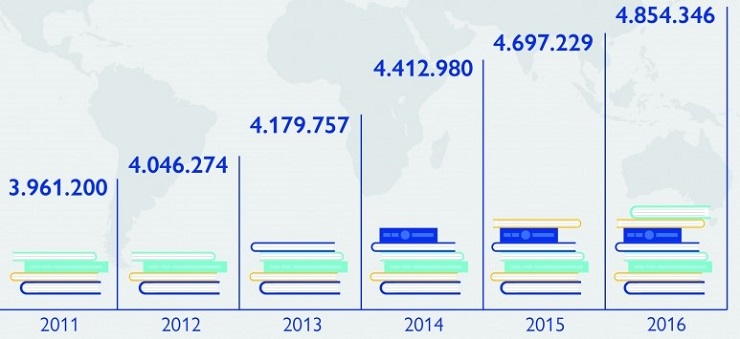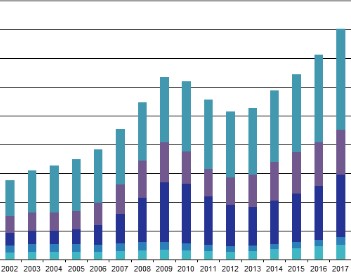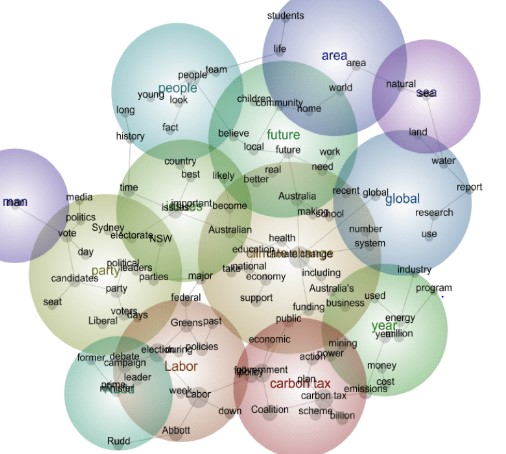Business Decision Analytics Sample Assignment
Introduction
The organisations in the present era aim to expand its business operations in the global context. Similarly, organisations in the field of academic or education also strive to expand their area of operation and seek growth. However, the management of a large scale business operation is a difficult task to perform; therefore such organisation requires an efficient team that can manage its business operation in the global context through effective communication and management skills. Thus, the following study determines the key decision making process that can be involved for ensuring the efficient functioning of such organisation globally.
Discussion on the chosen project
The project undertaken for the organisation Torrens University is of promoting and marketing the university globally for enrolling students from overseas and further seeking expansion of the university in the global market by establishing new university outside its base country. The reason for considering the project is due to the rise in the inflow of overseas students from the third and second world countries to Australia. Moreover, with rise in competition in the academic sector the chosen project of promotion and marketing can be considered to be of much essential for increasing Torrens university revenue along with its awareness in the global academic sector.
Further, in the context of overseas recruitment of students, it has been noted that the fees structure is increasing year after year; therefore one of the major aims of the undertaken project is to provide opportunities to the students with merit to be enrolled with minimum fees and choose the desired field for conducting their higher studies in Torrens University. Accordingly, it has been further noted that universities are implementing strategies by investing funds for strong online presence wherein they effort to provide various Assignments for students in the latest fields of academic and professional Assignments where the students are not required to be physically present in the university and can opt for their desired Assignment for higher studies. Therefore, in the chosen project the further aim is to provide online academic and professional Assignments to the students in the outside the country’s boundaries.
The most significant aspect of the chosen project is the inclusion of the current technologies for better communication with the students and other stakeholders overseas and enhancing the online marketing and promotional activities of the university. In doing so, the project will consider targeting the social media platforms and other external digital marketing agencies for obtaining new students and retaining the existing ones for other developmental Assignments. The project in the process of enrolling new students and providing new Assignments will determine and identify various aspects of individual students ranging from age and gender to cultural and socio-economic background so that the university can offer relevant Assignments to students that can result in providing value for the student as well as the university.
Sources of data and use of data analytics forming evidence for decision making
Sources of data for decision making process vary as per the organisations’ needs and requirements. (Baesens & Bapna, 2016), opines that both internal and external data sources allows to implement an effective decision making process in an organisation. This implies that the organisation by considering the data it has generated internally and at the same time the data collected from an outside source together form an integrated source of information that can be used for 360 improvement of the organisation. Moreover, in the same context (Cao, Duan, & Li, 2015) states that since the operations of the current organisations are mostly data driven, therefore it is important for considering data collected from internal and external sources to be a significant as in efficient decision making process.
In case of the undertaken project both the internal and external sources of data is required for the organisation, wherein the organisation considering the recruitment of new overseas students and implementation of new online Assignments will have to scrutinise the external sources of data and accordingly conduct the marketing and promotional activities. Later, the outcomes of these activities can be determined by generating internal data within the organisation, which will specify the level of progress of the undertaken project in Torrens University.
The external sources of data for the given project are as follows:
Report on international student migration
The amount of international student migration has significantly increased over time in diversified location and from diverse countries as well (King, R., & Raghuram, P. 2013). As per the current trend, it has been reported that in the year 2016 the number of international student migration increased to a number of 4.8 million as evident in the figure 1 given below. Accordingly, the major countries experiencing large inflow of international students are US, UK and Australia and at the same time the countries with such outflow are majorly China, India and countries from central Asia.

Figure 1: International student mobility in global perspective
(Source: ShaokunFana, Y.K.Laub, & LeonZhaob, 2015)
The below given figure 2 indicates the rise in the inflow of students in Australia since the year 2002 to 2017 and it is evident from given figure that there has been a significant increase in the year 2017 since 2002. By analysing the given trends, it can be assumed that the amount of funds invested and the rate of increase in the inflow of overseas students in Australia alone. However, the incoming overseas students consist of both scholarship and direct admission students.

Figure 2: International student mobility in Australia
(Source: Yichuan Wang, 2017)
However, while analysing the trends in international student mobility the factors that are taken into consideration are the circumstances that makes overseas candidates willing to pursue higher studies in the aforementioned countries. The circumstances here refers to the condition of the existing academic sector of the countries outflowing such a large number of students, moreover the international students include both availing scholarship or being exchanged and other factors that persuade these students in pursuing their academic career in overseas countries.
Decision making tools and technologies applicable for the chosen project
Decision making in an organisation is a crucial process and requires efficient and critical thinking ability for ensuring relevant and effective decision reading any given subject matter that can assist in organisational growth and success. In organisation the most crucial and significant decisions are undertaken by higher management and on the other hand some organisation tends to undertake a more collaborative approach in the process of decision making by allowing the various stakeholders in the organisation to actively participate in the same ( Sanchez-Lozano., et al 2013).
In regards to chosen project of Torrens University the models or tools that can be considered for effective decision making can be cited as follows:
Rational decision making:
In order to efficiently implement decision making process in the organisation it is important to undertake rational decisions. The reason for rational decision making due to the fact that it considers an organised way of implementing decisions by evenly analysing a given problem and tries to determine relevant solution for the same ( Wolfs ,. et al 2012). Moreover, rational decision making approach further considers mutual agreement prior offering or implementing any decisions. Thus, it can be said that by determining the individuals needs and interest of the students willing to enrol in Torrens University can opt for their desired Assignment and the project aims to provide adequate support to the students in choosing the Assignments that they are interested in.
Rational choice model:
The theory of rational decision making as proposed by (CelestineAguwa, HessamOlya, & LeslieMonplaisir, 2017), has stated that individuals always tends to increase the availability for growth and success in any given situation. As per the theory of rational decision making individuals will seek prospects for reducing loss and grad opportunities in order to gain advantages under any circumstances. This theory can be applied in the chosen project as the overseas students willing to pursue higher studies in Torrens University are looking for better prospect in regards to future growth and success. The theory mostly emphasizes on the human behaviour that makes choices for personal benefit and pleasure. Therefore, considering the same, it can be said that offering multiple options to choose from in respect to Assignments and fees structure the university can attract an ample amount of overseas students lacking such facilities.
Intuitive decision making:
As the name suggest intuitive decision making is the decision undertaken irrespective of any actual evidence (Dane,. et al 2012 ). This implies that the process intuitive thinking purely based on instinct or the experience felt by individual regarding a subject matter by applying their conscience and rationality. Here, in the case of the project undertaken for Torrens University it can be applied in formulating the fees structure where the management might consider lowering of the fees for the candidates those are economically not strong or belongs to such a background.
However, it has been already stated that organisational operations has experienced significant changes wherein technology plays a vital role. As per several studies and surveys it has been reported that modern organisation tends to use technology for decision making. The use of technology in decision making process as per (ShaokunFana, Y.K.Laub, & LeonZhaob, 2015) results in providing more relevant and precise decisions as the same is based on the data and statistics that allows in formulating both internal and external policies of an organisation in a much efficient manner. In the context of the undertaken project for the promotion and marketing of the Torrens university, the technological tools considered for the decision making process are as follows:
Group Decision Support System (GDSS):
It has already been mentioned that the university has undertaken the mentioned project with the aim of expanding its area of operation in the global context, therefore in such a scenario the stakeholders of the organisation will be deployed in various geographical locations (Lolli.,et al 2015). In this situation the system for supporting group decisions is much essential for maintaining proper coordination and communication among the team members across the globe. Moreover, the requirement for the GDSS is important as the project requires collaborative support where the views and opinions of the different team members is of much significance for proper completion of the project.
Leximancer concept:
The application of leximancer in the project is considered as it allows the various team members associated with the project to organize large volume of data acquired from multiple candidates across the globe. The information obtained can be processed at the same time in much simpler format, which can be easily accessed.

Figure 3: Leximancer concept map
(Source: Baesens & Bapna, 2016)
Business report
Project for the marketing and promotion of Torrens University
- The finance department along with the marketing team of Torrens University has undertaken the project of promoting the university in the overseas market for student enrolment and further including more academic Assignments within its academic curriculum.
- The competition in the current academic sector has led to the need for this project as the university needs to increase in current revenue and develop its infrastructure for future growth and sustainability.
- As per the market research conducted by the Torrens marketing team has reported the increase in the inflow of overseas students pursuing academic career in Australia.
- The reports from the marketing team and the data collected from the various sources indicates that undertaken project can be advantageous for the university and the inflow of overseas students can help in increasing the profitability of the organisation and can enable the university to create it positive image in the academic sector.
References
Baesens, B., & Bapna, R. (2016). TRANSFORMATIONAL ISSUES OF BIG DATA AND ANALYTICS IN NETWORKED BUSINESS. BIG DATA & ANALYTICS IN NETWORKED BUSINESS.
Cao, G., Duan, Y., & Li, G. (2015, june 24). Linking Business Analytics to Decision Making Effectiveness: A Path Model Analysis. From ieeexplore.ieee.org: https://ieeexplore.ieee.org/abstract/document/7132744
CelestineAguwa, HessamOlya, M., & LeslieMonplaisir. (2017). Modeling of fuzzy-based voice of customer for business decision analytics. Knowledge-Based Systems, 136-145.
Ebert, D. S., Fisher, B., & Gaither, K. (2019). Interactive Visual Analytics and Visualization for Decision Making – Making. From scholarspace.manoa.hawaii.edu: https://scholarspace.manoa.hawaii.edu/bitstream/10125/60254/intro-31.pdf
ShaokunFana, Y.K.Laub, R., & LeonZhaob, J. (2015). Demystifying Big Data Analytics for Business Intelligence Through the Lens of Marketing Mix. Big Data Research.
Yichuan Wang, T. A. (2017). Business analytics-enabled decision-making effectiveness through knowledge absorptive capacity in health care. Journal of Knowledge Management.
Lolli, F., Ishizaka, A., Gamberini, R., Rimini, B., & Messori, M. (2015). FlowSort-GDSS–A novel group multi-criteria decision support system for sorting problems with application to FMEA. Expert Systems with Applications, 42(17-18), 6342-6349.
Dane, E., Rockmann, K. W., & Pratt, M. G. (2012). When should I trust my gut? Linking domain expertise to intuitive decision-making effectiveness. Organizational Behavior and Human Decision Processes, 119(2), 187-194.
Wolfs, C. A., de Vugt, M. E., Verkaaik, M., Haufe, M., Verkade, P. J., Verhey, F. R., & Stevens, F. (2012). Rational decision-making about treatment and care in dementia: a contradiction in terms?. Patient education and counseling, 87(1), 43-48.
Sánchez-Lozano, J. M., Teruel-Solano, J., Soto-Elvira, P. L., & García-Cascales, M. S. (2013). Geographical Information Systems (GIS) and Multi-Criteria Decision Making (MCDM) methods for the evaluation of solar farms locations: Case study in south-eastern Spain. Renewable and Sustainable Energy Reviews, 24, 544-556.
King, R., & Raghuram, P. (2013). International student migration: Mapping the field and new research agendas. Population, Space and Place, 19(2), 127-137.


